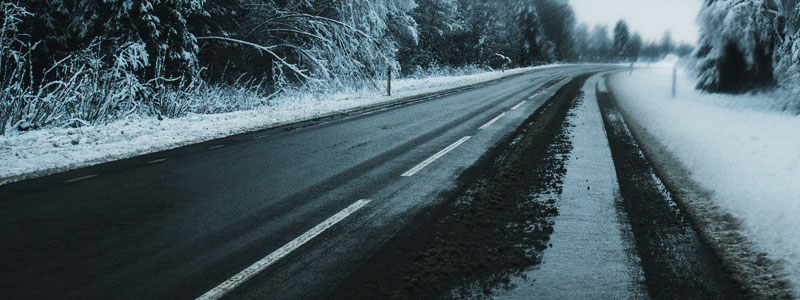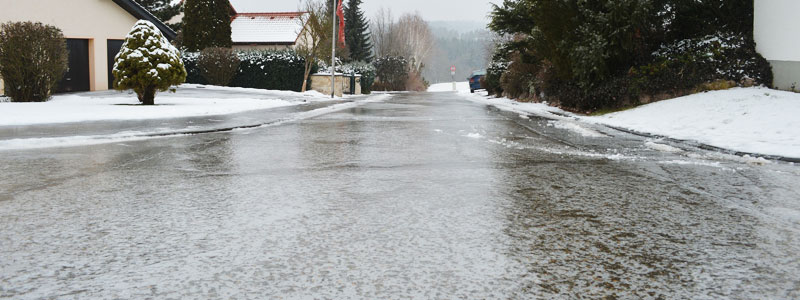I Slipped and Fell on Black Ice. How Does That Affect My Case?
A woman from New Jersey was awarded $375,000 after injuring her wrist. She was walking down her driveway to take out her trash when she slipped and fell on black ice. She sued the condo association, claiming neglect for not adequately melting the ice on her driveway We’ve all seen and experienced ice before, but […]

January 5, 2018

A woman from New Jersey was awarded $375,000 after injuring her wrist. She was walking down her driveway to take out her trash when she slipped and fell on black ice. She sued the condo association, claiming neglect for not adequately melting the ice on her driveway
We’ve all seen and experienced ice before, but black ice is a different matter. What is black ice, and why is it so dangerous?
What Is Black Ice?

Black ice may also be referred to as clear ice. It is a thin coating of ice that covers a surface, often a road or sidewalk. Because the ice is so transparent, many people do not notice it, and this causes people to slip and fall or even get into car accidents.
This type of ice typically forms whenever the temperature drops below freezing after the ground has already become wet. It often occurs when the temperature drops the night after a rainy day, or if the warmer weather during the day causes snow to melt before freezing again at night.
What Makes It So Dangerous?

The main reason black ice is so dangerous is due to many people’s inability to see it. People rarely take caution when walking on it, because many are unaware that they are even about to step on black ice until it is too late. Therefore, when they begin to slip, they are caught completely off guard. This often leads people to tense their bodies, which can cause much more damage than if they were to remain loose during the fall.
How Does It Affect Your Claim?

Whether the ice is regular ice or black ice can play huge role in your slip and fall accident claim. Ice in plain sight can be seen by the court as an obvious and avoidable danger, but since black ice is so difficult to see, it’s hard to justify that the injured person should have known to avoid it.
This makes the case a bit tricky, because while there is little the victim could have done to avoid the black ice, one could also argue that there is little the property owner could have done if they didn’t know about it. However, in many cases like this, the court has ruled that it was the property owner’s responsibility to inspect more carefully, and spots where black ice is likely to form should be salted thoroughly even on days when the ice cannot be seen.
With these regulations come some conditions in which black ice would be seen as an open and obvious condition:
- If other victims slip in a spot before you walk upon it. Typically, if you see someone else slip in a particular area, you should assume that that area and the areas around it might be slippery.
- If the area was covered by a layer of snow. Even if you could not see the ice itself, it is advised to guess that any area under a layer of snow has the potential to be icy.
- If it is currently snowing. If the weather is cool enough to snow, one must assume that temperatures may also be cool enough for this snow to freeze. Therefore, it is wise to proceed with caution if it is snowing.
- If any signs are hung warning of potential ice. If a property owner is aware that a particular area tends to get icy during the cold weather months, and he hangs a sign warning of this near the area, it is your duty to trust the sign and proceed with caution.
Help from an Indiana Slip and Fall Lawyer
If you were injured in a slip and fall due to black ice, you could be entitled to compensation. Call Hensley Legal Group today for a free consultation, or contact us online.